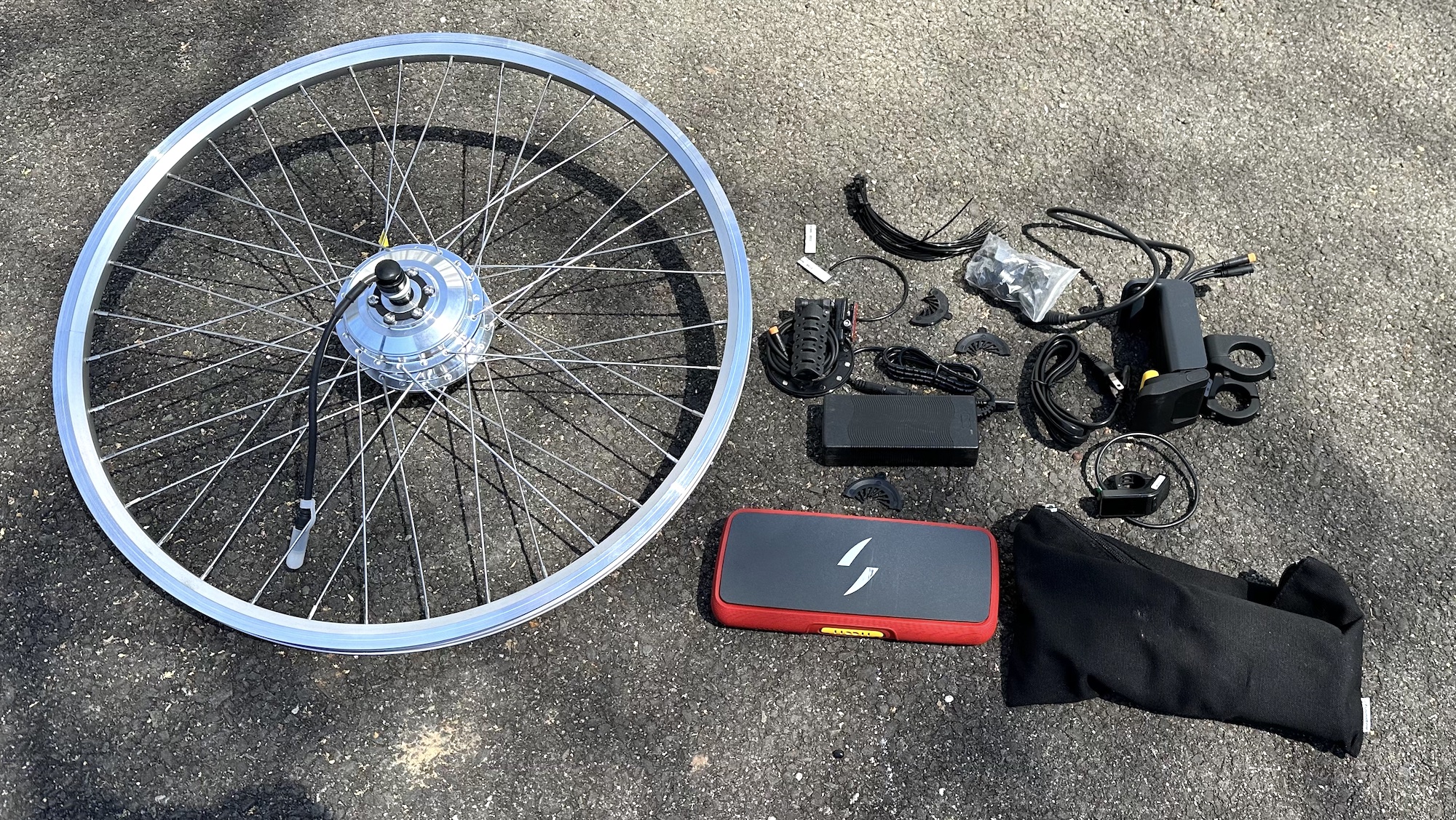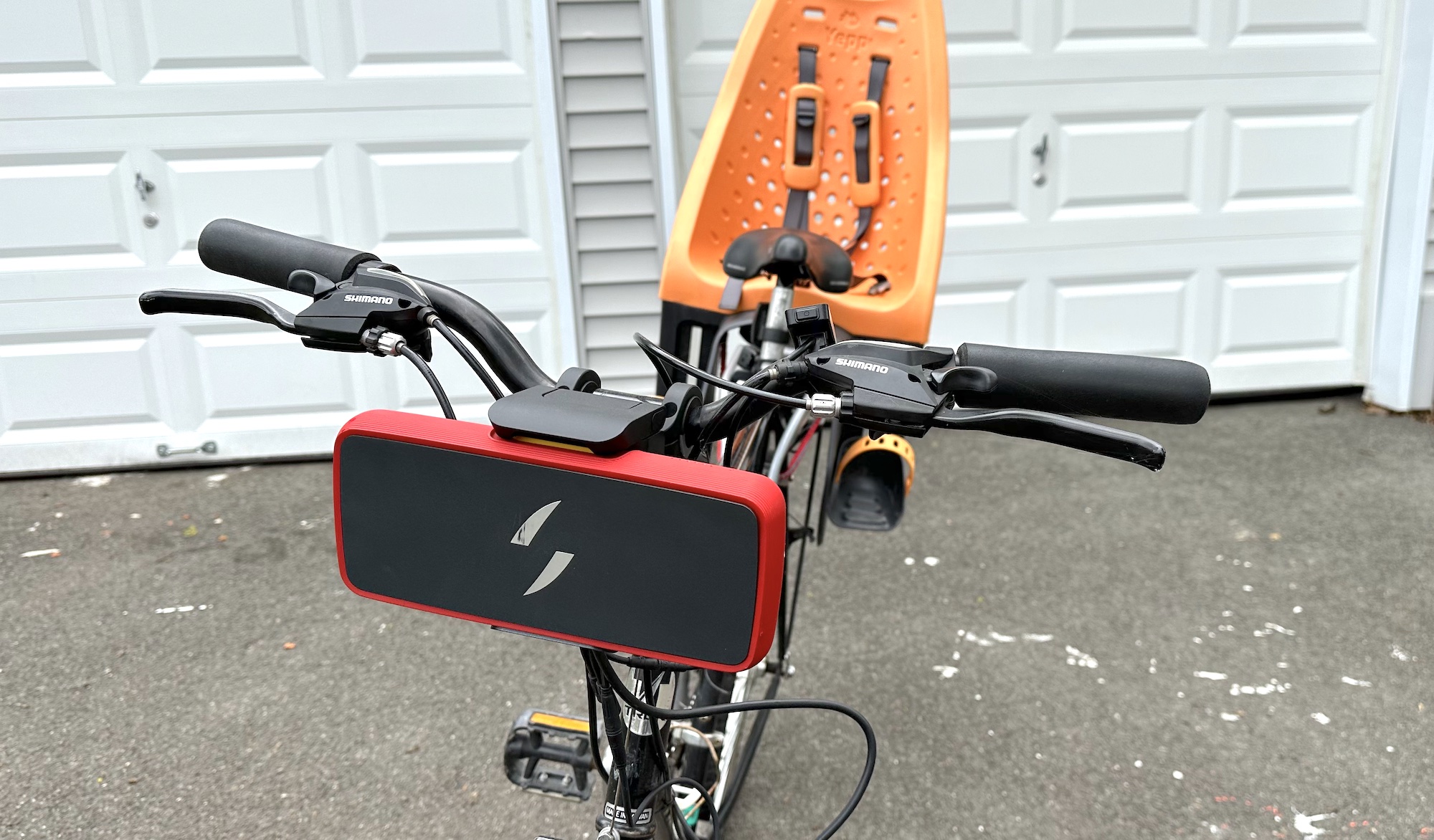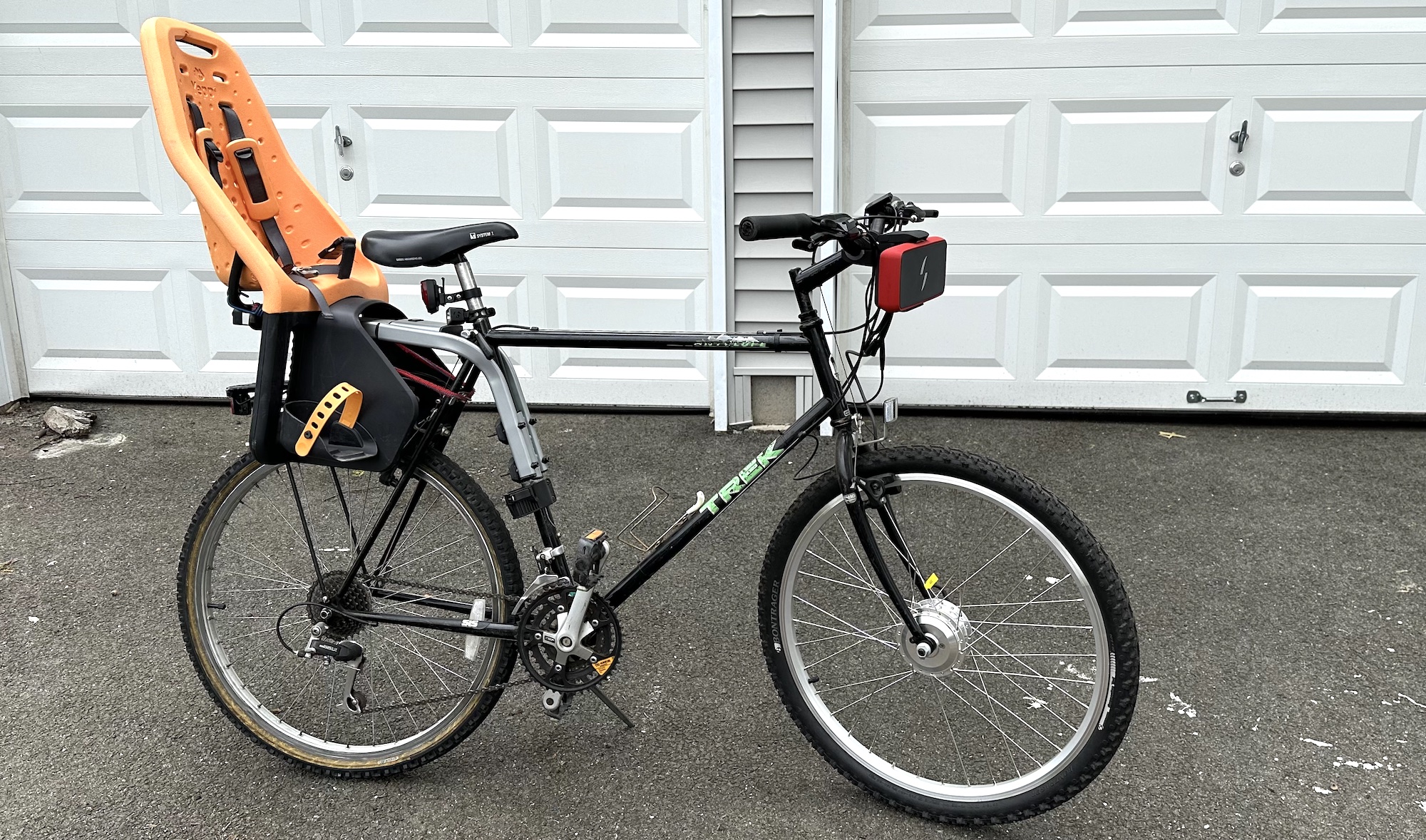Tom's Guide Verdict
The Swytch Air ebike conversion kit was a great addition to my 30-year-old bike. However, its limited range, convoluted ordering process, and long wait times would make me think twice about buying it.
Pros
- +
Easy to install
- +
Provides good power
- +
Clear display
Cons
- -
Convoluted ordering process
- -
Short range
Why you can trust Tom's Guide
I’ve had my Trek 830 bike for 30 years; my parents purchased it for me when I was a kid so I could ride from home to school and back. While the paint has chipped in a few places and I’ve had to replace the shifters and tires over the years, it’s held up remarkably well. After my daughter was born, I added a child seat to the bike to give it new purpose. And, since I first used my bike to ride to school, why couldn’t I use it once again for that purpose — only this time, it would be to take my daughter to her school.
However, as she has grown, it’s become harder to get up the hills around my town. Taking her to school would also be a challenge. But could an electric bike conversion kit breathe new life into my 30-year-old ride? I installed the Swytch ebike conversion kit onto my trusty Trek to find out.
One of the advantages of buying a conversion kit is that they’re less expensive than buying one of the best electric bikes — even one of the best budget electric bikes. And, if you already have a traditional bike, there’s no sense in going out and buying a completely new model. But how does a conversion kit like the Swytch compare to an electric bike? Read the rest of this Swytch review to find out.
Editor's note (June 2024): Swytch has released the Swytch Go, which is essentially the same kit, but with a much larger battery, giving you greater range than the Swytch Air. Read our Swytch Go review for more details.
Swytch eBike conversion kit review: Price and availability

The Swytch eBike conversion kit is available only through Swytch’s website. The company offers two versions: one for traditional bikes and one for folding bikes like the Brompton.
As part of the ordering process, you need to provide some information, such as the wheel size of your bike (from 16 to 28 inches), whether you have disc or rim brakes, what kind of display you want, and the size of the battery you want — Air (15km 90Wh) or the tablet-sized Max (30km 180Wh). If you do order, go with the larger battery. I’ll explain why later in this review.
Because of limited inventory, Swytch has a convoluted ordering process. As of this writing, if you want the Max version by July/August, it will cost $879; if you don’t mind waiting until September/October, the price is $649.
Similarly, an Air model for a July/August delivery date costs $649, but drops to $499 if you wait until September/October. Regardless of the model, you also have to put in a downpayment of $200 to $300, depending on which you choose.
Get instant access to breaking news, the hottest reviews, great deals and helpful tips.
But that’s not all — after submitting your credit card information, you’re then hit with other add-ons, some of which are necessary, such as a display, which can also drive up the price. (I couldn’t find specific prices for these, as I would have had to place an order for the bike.)
I also found three separate pages for ordering the Swytch; through this page, it looks like you can order the Air kit straightaway for $1,500; this Swytch page lets you order the bike with a much lower price with the longer delivery dates; and this Swytch page merely lets you sign up for a waitlist.
The three separate ordering pages, the long wait times, and the hidden fees all would make me feel uneasy if I were a consumer.
Swytch eBike conversion kit review: Installation

The Swytch kit came with a nice set of tools — a beefy adjustable wrench, a pair of clippers, and a set of Allen wrenches. Ironically, the latter did not have a small enough Allen wrench for a couple of the screws on the Swytch kit. You will need to provide your own tools for removing the tire from your bike’s wheel, but those are pretty inexpensive. This set of four bike tire levers costs $10 on Amazon, and any local bike shop should have plenty of these in stock.
Installing the whole kit took around 30 to 45 minutes, though it may take a little longer if you haven’t worked on a bike before. First, you have to swap the front tire on your bike for the one that comes in the kit. You then have to install a sensor around your pedals, and then put the battery pack and display on your bike. The battery pack gets mounted between your handlebars and takes up a lot of real estate; I had to move my bike light to a different spot.
Everything is secured using screws or plastic zip ties, which are also included in the installation kit. Except for the front tire, everything is pretty noninvasive, so you can remove it easily.
Swytch eBike conversion kit review: Performance
The Swytch has a modest 250W motor, but it was more than powerful enough to give me a nice boost as I was pedaling. It didn’t turn my 30-year-old Trek into a motorcycle, but it did make it a lot easier to get up and down hills. In the U.S., you’re limited to a max assisted speed of 20 miles per hour, which was plenty fast for me.
The motor kicks in after a couple of cranks of the pedal, so it isn’t as instantaneous as the torque sensor on some of the best electric bikes. Then again, this kit costs less than $1,000, so I’m willing to give it a bit of leeway.
The small OLED display (which shows your speed, trip distance, and battery life) was bright enough for most situations, but it would get washed out by direct sunlight. I didn’t look at it all that often, anyway. Two buttons just below the display let me adjust the level of motor-assist; they were easy to press, but you should try and mount it as close as you can to your thumb.
While the basic kit offers pedal-assist only, you can purchase a thumb throttle for the Swytch if you want it to do all the work. However, this will drain its small battery even faster.
Swytch eBike conversion kit review: Battery life and range

The only real issue I had with the Swytch was the size of its battery. The company advertises that the 180Wh Max battery has a max range of 30 kilometers, which equates to about 17 miles.
The ride from my house to my kid’s school is about 3.6 miles, making two roundtrips roughly 14.4 miles. In my years of testing electric scooters and electric bikes, I’ve found that manufacturer’s range estimates to be highly optimistic, and the Swytch was no different. Its battery died while I was still a mile — and one big hill — away from my home.
Hopefully, Swytch will make a larger battery pack in the future — perhaps one that could be attached to a rear bike rack.
The Swytch’s battery popped out easily from its handlebar-mounted position; the battery (9 x 3.9 x 1.4 inches) is about the size of a woman’s clutch, so it’s not overly large. While it’s easy to throw in your backpack, I wish there was a way to lock it into place on the bike itself, so I wouldn’t have to worry about it being stolen.
Swytch eBike conversion kit review: Bottom line

Taking my daughter to school and picking her up on my bike on a nice warm, sunny spring day was a real treat. We could better enjoy all the lawns and gardens of our neighbors as we rode by, and it was a pleasure to smell the flowers and blossoms along the way.
It’s certainly more pleasurable than driving in a car, and over the course of a week, it saved me about a gallon and a half of gas; over the course of a month, that would conservatively be about 130 miles.
Will this pay off anytime soon? Not likely. My Honda CR-V gets about 30 miles to the gallon. Taking an average price of $3.50 per gallon, we’re spending about $15 per month just to drive her to school. At that rate, it would take 40 months to pay off the cost of the Swytch, assuming I’d use my bike every day.
However, the limited range and the murky ordering process don’t inspire much confidence; if Swytch were a bit more open about what accessories come with the kit, I might be more inclined to order.
Even so, there are other ebike conversion kits that offer more value, even if they cost more. This Bafang front hub kit, for instance, comes with a 500W motor and a much larger 557Wh battery for $849. Bafang is also upfront about what each add-on costs, and you can get it right away.
The closer you get to $1,000, the less attractive an ebike conversion kit becomes, as many of the best budget electric bikes can be found for around that price. But, if you want to breathe some new life into your old bike, these kits are definitely worth a look.
More from Tom's Guide

Michael A. Prospero is the U.S. Editor-in-Chief for Tom’s Guide. He oversees all evergreen content and oversees the Homes, Smart Home, and Fitness/Wearables categories for the site. In his spare time, he also tests out the latest drones, electric scooters, and smart home gadgets, such as video doorbells. Before his tenure at Tom's Guide, he was the Reviews Editor for Laptop Magazine, a reporter at Fast Company, the Times of Trenton, and, many eons back, an intern at George magazine. He received his undergraduate degree from Boston College, where he worked on the campus newspaper The Heights, and then attended the Columbia University school of Journalism. When he’s not testing out the latest running watch, electric scooter, or skiing or training for a marathon, he’s probably using the latest sous vide machine, smoker, or pizza oven, to the delight — or chagrin — of his family.

